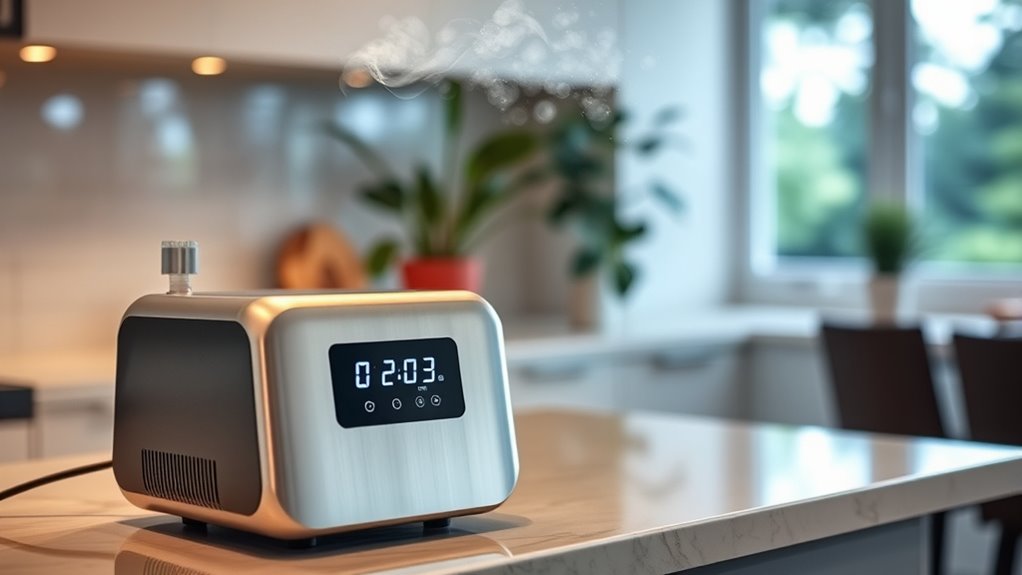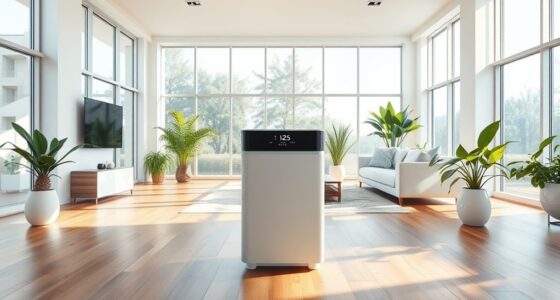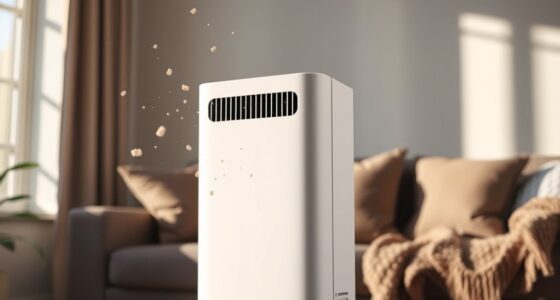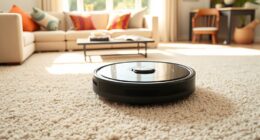Ozone generators can effectively remove odors, mold, and bacteria, making them seem helpful for air purification. However, they also release ozone, which can irritate your lungs and cause breathing issues, especially for sensitive groups. Misuse or overuse increases health risks and can create harmful byproducts. If you’re concerned about safety and want to understand when and how to use these devices properly, there’s more to contemplate before deciding.
Key Takeaways
- Ozone generators effectively eliminate odors and mold but pose health risks if used improperly in occupied spaces.
- Breathing ozone can cause lung irritation, coughing, and worsen respiratory conditions, especially in sensitive groups.
- They produce harmful byproducts when reacting with airborne chemicals, increasing potential health hazards.
- Health authorities advise against using ozone generators in homes or workplaces with people present during operation.
- Proper use, precautions, and awareness of risks are essential to balance their cleaning benefits with safety concerns.
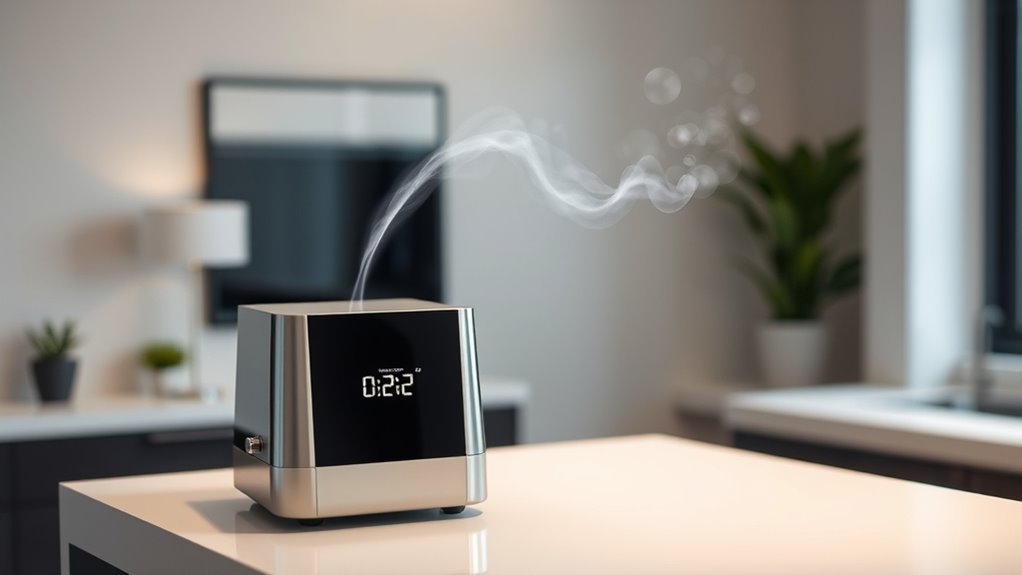
Have you ever wondered how ozone generators work to improve air quality? These devices are often marketed as powerful tools for air purification, promising to eliminate odors, mold, bacteria, and other airborne pollutants. They produce ozone—a molecule composed of three oxygen atoms—that reacts with contaminants in the air. When you turn on an ozone generator, it releases ozone into the environment, where it seeks out and neutralizes odors and microbes. This process can be effective at purifying the air quickly, especially in spaces with strong smells or excessive mold. However, it’s *essential* to understand that the same ozone used to clean the air can also have serious health effects if misused or overused.
Ozone is a strong oxidant, which means it can react with organic materials, including the cells of your respiratory system. When you breathe in ozone, it can irritate your lungs, causing coughing, chest tightness, and breathing difficulties. For sensitive groups—such as children, the elderly, or people with asthma—the effects might be even more severe. While ozone can neutralize bacteria and viruses, the potential health effects from exposure often outweigh the benefits of using ozone generators for air purification in occupied spaces. That’s why some health authorities warn against using ozone generators in homes or workplaces where people are present during operation.
Another concern is that ozone can react with other airborne chemicals to create harmful byproducts, increasing the risk of respiratory issues and other health problems.
Frequently Asked Questions
How Do Ozone Generators Compare to Traditional Air Purifiers?
When comparing ozone generators to traditional air purifiers, you’ll find that traditional purifiers use HEPA filters and activated carbon to trap particles and odors, offering safe air purification. Ozone generators, on the other hand, produce ozone to neutralize pollutants, but their ozone effectiveness can be questionable and potentially harmful. You should weigh the risks and benefits carefully, as traditional air purifiers tend to be safer and more reliable for everyday air purification needs.
Are There Specific Indoor Environments Where Ozone Generators Are Safer?
Indoor safety depends on environmental conditions, so ozone generators are safer in well-ventilated spaces with low pollution levels. Avoid using them in areas with children, pets, or sensitive individuals, as poor ventilation can increase health risks. If you choose to use ozone generators, ensure proper airflow and monitor air quality. Always prioritize indoor safety by evaluating environmental conditions before deploying ozone technology.
Can Ozone Generators Be Used Around Pets or Children?
Did you know that ozone exposure can be harmful even at low levels? When it comes to pets and children, using ozone generators isn’t safe. You should prioritize pet safety and avoid exposing them to ozone, as their respiratory systems are more sensitive. Keep children away during and after use, since inhaling ozone can cause lung irritation. Always choose safer cleaning methods to protect your loved ones from potential harm.
What Are the Long-Term Health Effects of Ozone Exposure?
You might wonder about the long-term health effects of ozone exposure. Over time, inhaling ozone can cause chronic respiratory problems, like asthma or reduced lung function. It may also lead to neurological effects, such as headaches or cognitive issues. Prolonged exposure can worsen existing conditions and increase your risk of health complications. Staying aware of ozone levels and minimizing exposure helps protect your respiratory and neurological health in the long run.
Are There Regulatory Standards for Ozone Generator Safety?
You should know that regulatory compliance and safety standards are in place for ozone generators. Agencies like the EPA set limits on ozone emissions to protect health, requiring manufacturers to meet specific safety standards. These regulations help guarantee that ozone generators are used safely and effectively, minimizing health risks. Always check for certified devices that adhere to these safety standards to avoid potential harm from improper use.
Conclusion
In the battle between cleanliness and health, ozone generators are a double-edged sword. While they can seem like magic wands eradicating odors and germs instantly, they might also release invisible villains—harmful ozone levels—that threaten your well-being. Think of them as a wolf in sheep’s clothing, promising purity but risking chaos. Use them wisely, and remember: sometimes, the safest choice is the most natural one, because no amount of technology is worth risking your health.
